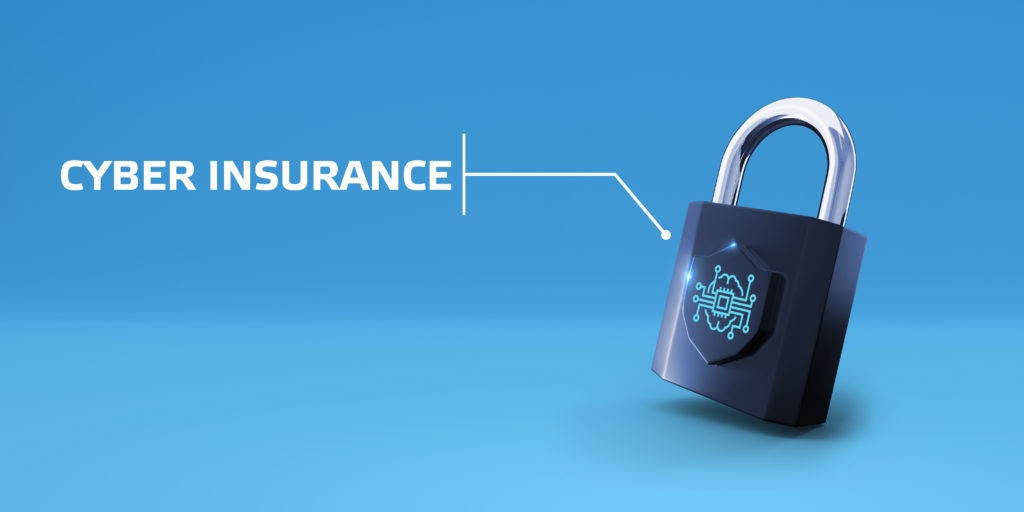
Cyber Insurance Providers Require MFA

Cybersecurity Insurance: Why You Need MFA to Ensure Policy Validity
Your home/commercial property insurance provider would not respond well if you told them that you didn’t have a front door lock. Similarly, cyber insurance providers are working to protect their investments by making sure that all policyholders have implemented the proper security features to keep their cyber assets safe. This includes the authentication protocols businesses are using to restrict and grant access where required.
Cybersecurity insurance is becoming an increasingly common consideration for American businesses, and an increasingly diverse one. There were estimated to be over 1,000 data breaches in the United States in 2020 — up from 662 ten years ago — impacting almost 156 million individuals. This has underlined the need for businesses to get themselves insured against a possible breach or attack, and growth in the cyber insurance market seems to reflect this. The global cyber insurance market was valued at $7.8 billion in 2020, and it is expected to hit $20 billion by 2025.
But this market is not a homogenous one. In fact, there are different insurance policies businesses can take out to protect themselves against cybercrime and data breaches. Businesses can opt for a cybersecurity insurance policy that covers first-party damage to their business and personnel, or they can take out cyber liability insurance that covers liabilities for third-party damages. There are also other options, such as Technology Errors and Omissions Insurance for software and tech solution providers.
In other words, cybersecurity insurance is not as simple and straightforward as it might at first appear. Insurance isn’t a “band-aid” solution — there’s more to it. To further complicate matters, there are minimum policy requirements to bear in mind.
MFA Becomes Mandatory for Many Cybersecurity Insurance Providers
Many cyber insurance policy providers now require their policyholders to protect systems and digital assets with two-factor authentication (2FA). Whether you are taking out a policy with a provider for the first time, or even if you are simply looking to renew an existing policy, you may find yourself ineligible if you do not implement 2FA/MFA within your workplace systems. Many cybersecurity insurance policies now require MFA for the policyholder. To gain coverage, companies are required to have MFA, endpoint threat detections, audit reports and more.
But what has changed? Why is MFA suddenly so high on the agenda for insurance providers? The Executive Order on Improving the Nation’s Cybersecurity required government agencies to adopt “multi-factor authentication and encryption for data at rest and in transit,” effectively ushering in a shift in best practices across the entire cybersecurity landscape.
How MFA Provides a Defense Against Cyber Crime
MFA works by adding an extra level of security to the login and access process. A traditional password protocol is essentially a form of single-factor authentication. Only one piece of information is required, and the person seeking access knows this information. MFA builds upon this, adding another tier to the access protocol. This may be in the form of a fingerprint scan, or simply a notification sent to a registered device. The individual does not “know” the information required for this step of the authentication process. This lack of knowledge bolsters the security of the protocol. This is like needing both a key and the code to get into a front door.
According to Woodruff Sawyer, MFA can 1) reduce your claims activity (potentially reducing insurance costs) and 2) can now qualify with more insurance companies, helping to get favorable rates.
But why is 2FA so important for cybersecurity insurance providers?
Additional Layer of Protection – Defense-in-Depth
A single authentication factor provides some security, but two factors of authentication provide a more robust defense. By requiring two steps of authentication, businesses can shore up their accounts against data breaches without significantly slowing the login process.
Security Taken Out of Employee Hands
Passwords are notoriously vulnerable when it comes to security. Around 67% of Americans are using a single password across multiple accounts, while around half of people rely on memory alone to manage their passwords. This means passwords can become lost easily — reducing access efficiency — or, worse, compromised. MFA eliminates this risk, as users do not need to create and retain their own access credentials for the second step of authentication.
A Highly Effective Solution
The primary reason behind MFA becoming mandatory for cyber insurers — is that it works. Data released by Microsoft found that implementing MFA prevented 99.9% of account breaches, demonstrating the effectiveness of multi-factor implementation.
Navigating the Complex Terrain of Cybersecurity with GateKeeper
Cybersecurity and insurance is a complex landscape, and businesses have a lot on their plate as they navigate this. Insurance provides an effective safety net, offering peace of mind to business owners. Implementing MFA as part of your security protocols also helps to ensure the ongoing viability of your cybersecurity insurance.
Does your cyber insurance provider require you to have MFA for your cyber insurance policy? Using GateKeeper for MFA makes meeting the requirements to obtain cyber security insurance much easier.
See GateKeeper Enterprise advanced MFA in action.
Take a self-guided tour of how you can evolve from passwords. Then you're really saving time with automation.




